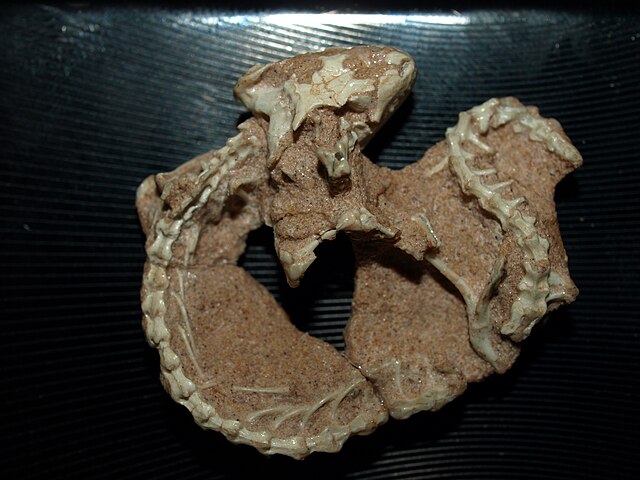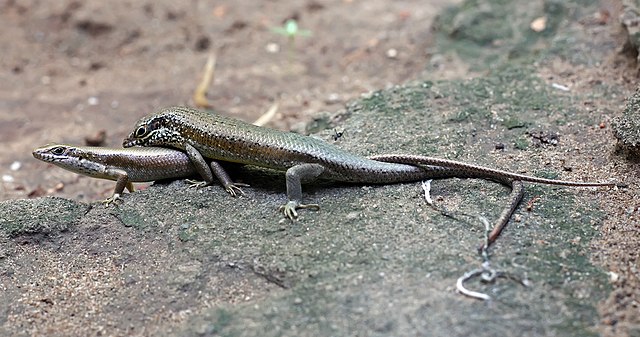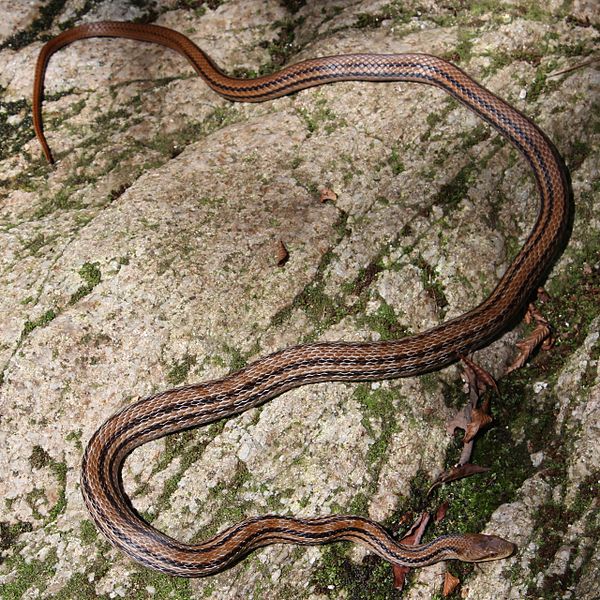The Acrochordidae, commonly known as wart snakes, Java wart snakes, file snakes, elephant trunk snakes, or dogface snakes are a monogeneric family created for the genus Acrochordus. This is a group of basal aquatic snakes found in Australia and tropical Asia. Currently, three species are recognized.
Acrochordus
Head of Acrochordus arafurae
Image: Arafura file snake (Acrochordus arafurae) in captivity
Image: File snake (Acrochordus granulatus)
Squamata is the largest order of reptiles, comprising lizards and snakes. With over 11,500 species, it is also the second-largest order of extant (living) vertebrates, after the perciform fish. Squamates are distinguished by their skins, which bear horny scales or shields, and must periodically engage in molting. They also possess movable quadrate bones, making possible movement of the upper jaw relative to the neurocranium. This is particularly visible in snakes, which are able to open their mouths very wide to accommodate comparatively large prey. Squamates are the most variably sized living reptiles, ranging from the 16 mm (0.63 in) dwarf gecko to the 6.5 m (21 ft) reticulated python. The now-extinct mosasaurs reached lengths over 14 m (46 ft).
Squamata
The holotype of Slavoia darevskii, a fossil squamate
Trachylepis maculilabris skinks mating
The Japanese striped snake has been studied in sexual selection.








